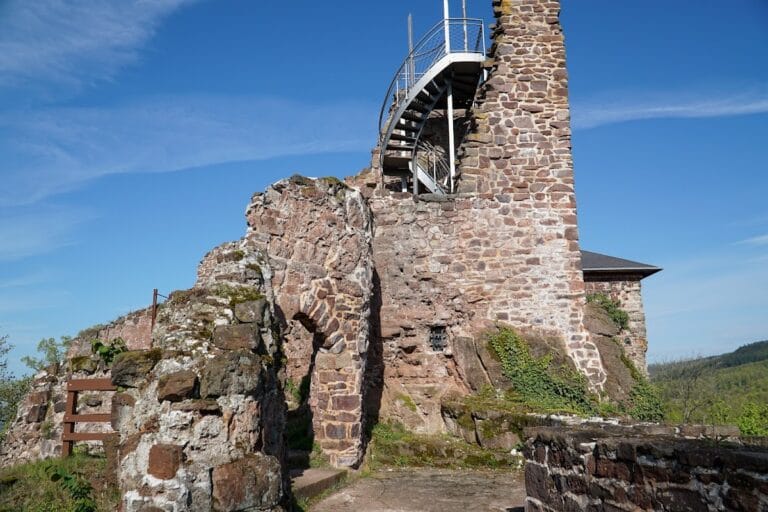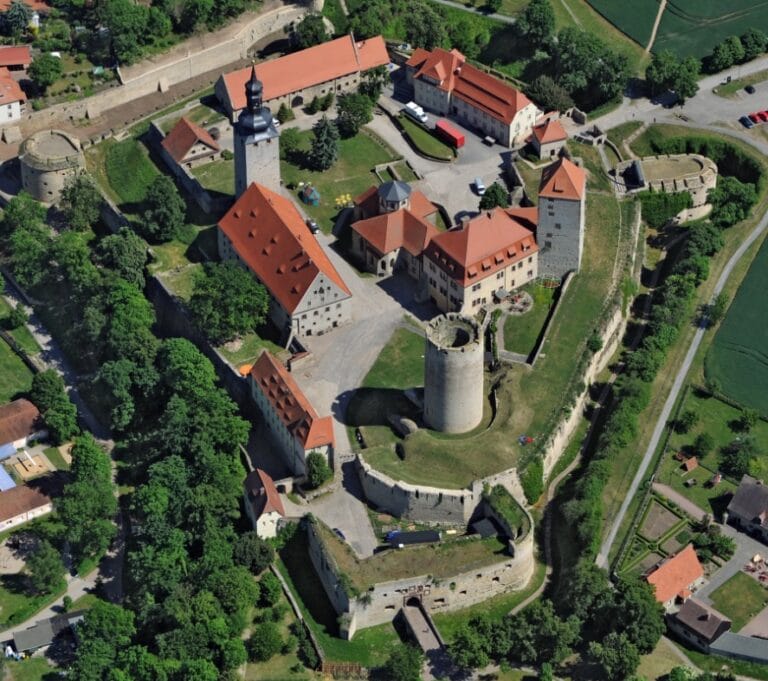Falkenstein Castle: A Historic Fortress in Saxony-Anhalt, Germany
Visitor Information
Google Rating: 4.3
Popularity: Very Low
Google Maps: View on Google Maps
Country: Germany
Civilization: Medieval European
Remains: Military
History
Falkenstein Castle stands near Meisdorf in the Harz region of Saxony-Anhalt, Germany. It was built between 1120 and 1180 by the lords of Konradsburg, who later adopted the title Counts of Falkenstein. The castle’s founding is linked to a legend involving Egeno II of Konradsburg, who killed Count Adalbert II of Ballenstedt around 1080. Following this event, the original family seat was converted into a monastery, and Egeno’s son Burchard established Falkenstein Castle as the new family residence.
In the early 13th century, Falkenstein Castle gained cultural significance when Eike von Repgow, a ministerialis (a type of unfree knight) serving the Anhalt region, composed the Sachsenspiegel here in 1220. This was the first German law book, which he dedicated to Hoyer von Falkenstein, a member of the ruling family. The castle remained under the control of the Falkenstein counts for several generations.
By 1437, the castle passed as a fief to the House of Asseburg through the Bishopric of Halberstadt. The Asseburg family maintained ownership until the mid-20th century. Notable members include Bernd VI, who rebuilt the south wing in 1491, and Augustus von der Asseburg, who undertook construction work in 1592. The castle endured military challenges, including occupation by Swedish troops during the Thirty Years’ War from October 1642 to February 1643.
In the 20th century, parts of the Asseburg family treasure were hidden within the castle grounds during World War II, specifically in 1943 and 1945. These caches were rediscovered decades later, in 1990 and 1992, yielding about 3,000 items, including Meissen porcelain found in 2017. After legal proceedings, most of the treasure was returned to the family, with some pieces remaining on loan to the castle museum. Since 1946, Falkenstein Castle has functioned as a museum, and since 1996 it has been managed by the Kulturstiftung Sachsen-Anhalt foundation.
Remains
Falkenstein Castle is a hilltop fortress built on a rocky ridge approximately 320 meters above sea level, overlooking the Selke valley. The entire complex measures about 310 by 90 meters, with the core area including the inner bailey, gate, zwinger (an outer defensive ward), and three outer baileys covering roughly 40 by 40 meters. The castle’s construction primarily dates from the 12th century, with later modifications.
The central feature is a 31-meter-high bergfried, or main tower, notable for its drop-shaped ground plan. The tower’s walls are two meters thick at a height of 8.5 meters. Its pointed side faces east, the direction from which attacks were expected, and includes a massive wedge-shaped shield wall designed to deflect projectiles and reduce damage from explosives. Originally, a wooden bridge connected the bergfried to the palas, the residential building in the northwest corner, about nine meters above ground. Later Gothic alterations linked these structures directly.
Historically, the castle was protected by seven gates and five zwingers, with the side facing the main anticipated attack fortified by a 17-meter-high shield wall. A 20-meter-deep cistern within the grounds provided water storage. The castle complex also includes an inner courtyard, a kitchen, and a great hall known as the speisezimmer. A notable decorative element is a coat of arms stone from 1491 bearing the inscription “Bernt van der Asseborch,” commemorating Count Bernd VI.
The castle grounds have yielded significant archaeological finds, including the Asseburg family treasure and Meissen porcelain recovered from hidden caches. The site is surrounded by forested protected areas and lies near other medieval castle ruins such as Ackeburg and Old Falkenstein Castle. Today, the bergfried serves as an observation tower, and the castle complex includes a falconry and a restaurant offering traditional medieval-style meals.










